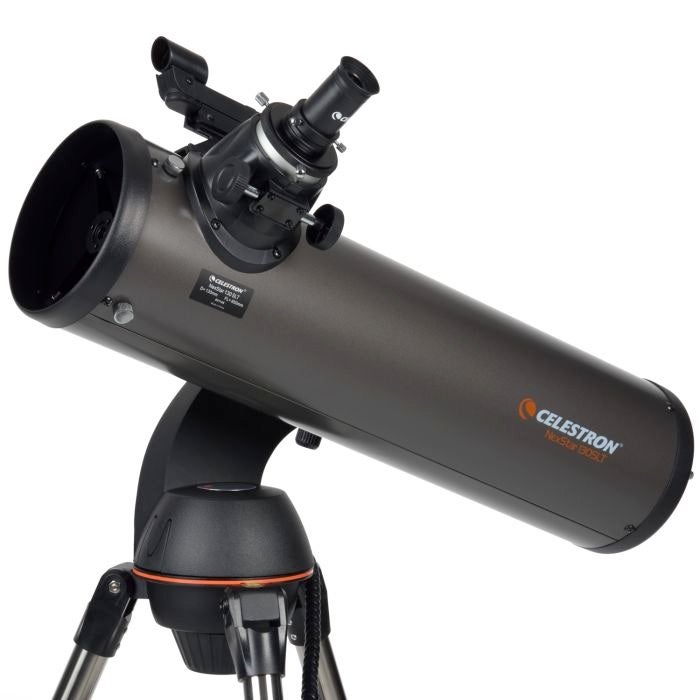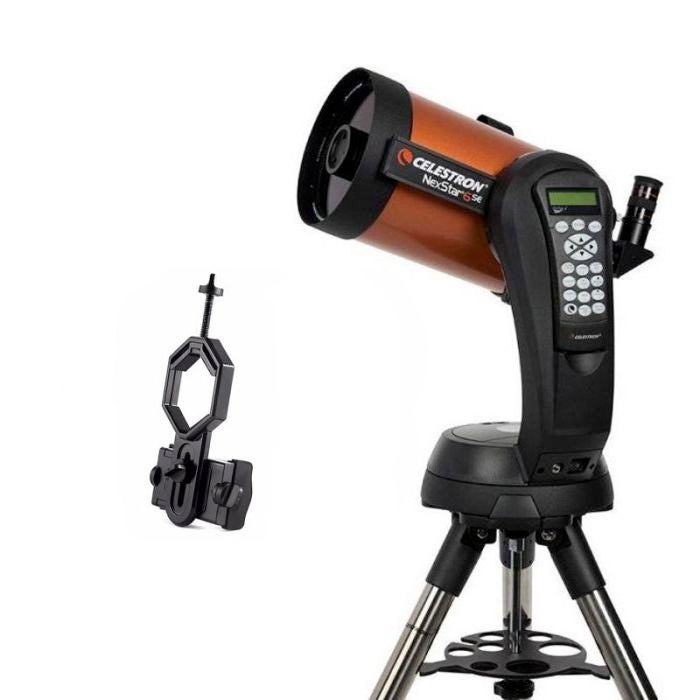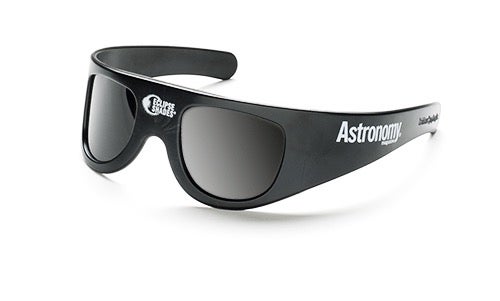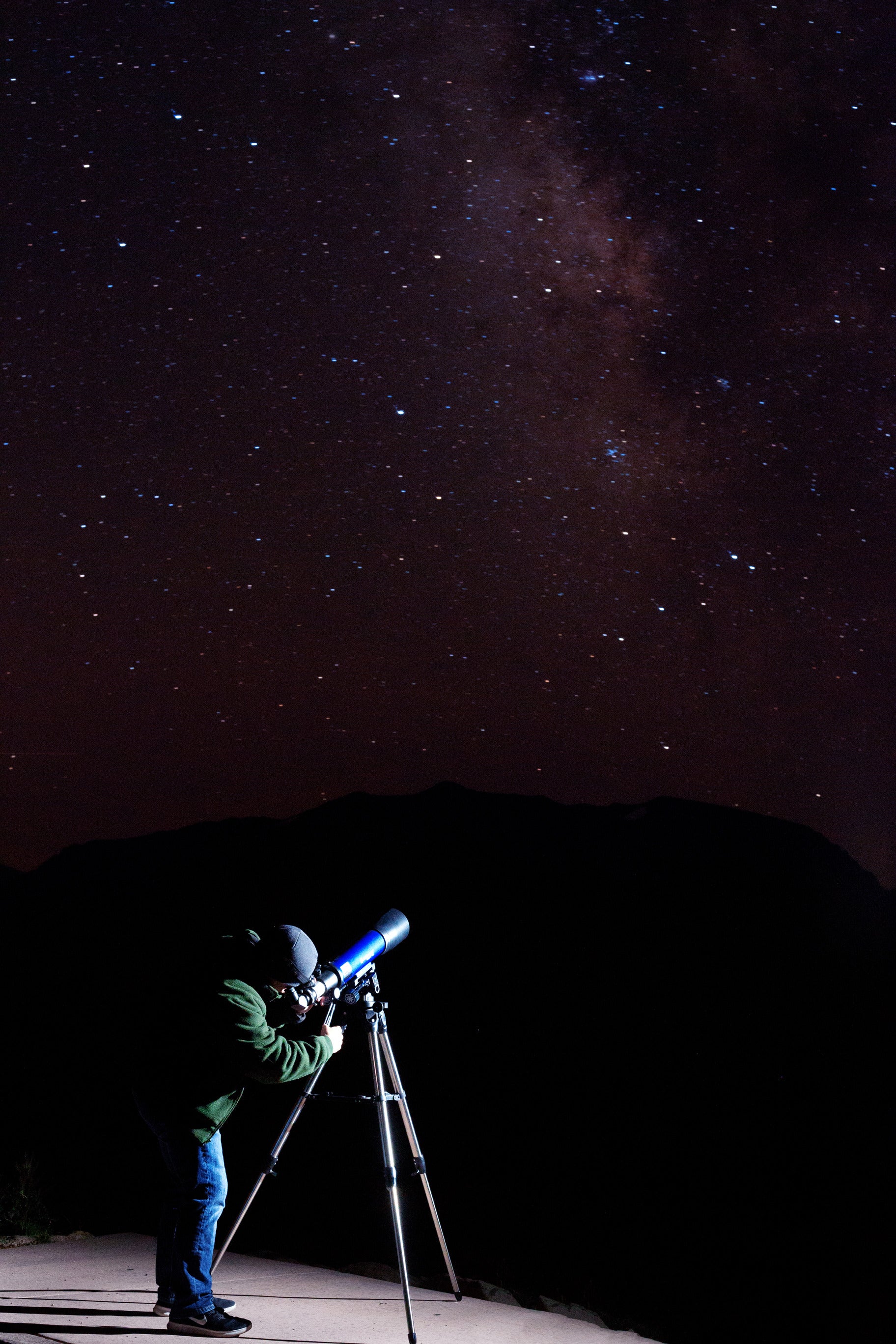
Attention stargazers and astrophotography aficionados: If you’re ready to take a truly giant leap into the cosmos with an expensive telescope, this guide is for you. We’re talking top-tier, splurge-worthy telescopes that promise to elevate your starry experiences to new heights.
However, you should know that choosing the right expensive telescope is not just about spending a ton of money; it’s about finding the right balance of quality, precision, and ease of use that’s right for you. Here are a few things to keep in mind.
Note: This post contains affiliate links. When you buy a product through the links on this page, we may earn a commission.
Our telescope review process: At Astronomy magazine, we take our reviews seriously. Our team of experts has hands-on experience with a wide range of telescopes, and we stay up-to-date with the latest technological advancements. For this list, we’ve considered user reviews, technical specifications, and our own experiences viewing celestial objects with many different telescopes.
Top expensive telescopes for serious astronomers
Celestron CGX-L 1400 EdgeHD Computerized Telescope
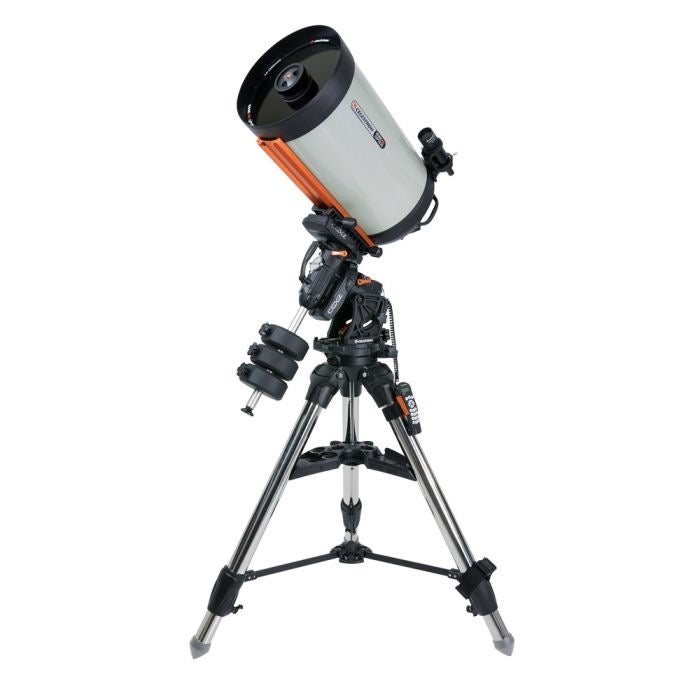
- Price: $10,999
- Why we like it: This telescope combines Celestron’s advanced optics with a robust mount, ideal for serious astro-imaging.The EdgeHD optical system ensures flat-field and diffraction-limited stars across the entire field of view. It’s compatible with wide-angle eyepieces or a full-frame CCD camera, enhancing its versatility. This scope includes flexible tension clutches for mirror stability, a cooling fan for the primary mirror, and Fastar compatibility for f/2 wide field imaging.
- What to keep in mind: The telescope, with its advanced features, is best suited for experienced astronomers or those serious about diving deep into astrophotography. The CGX-L mount can handle a total weight of 75 pounds, and its high build quality offers precise tracking and pointing accuracy. Its size and weight might require a more permanent or semi-permanent setup, as moving it could be a challenge.
Product details
- Type: Aplanatic Schmidt-Cassegrain telescope (SCT)
- Mount: Computerized CGX-L Equatorial
- Aperture size: 14 inches (355.6 mm)
- Focal length: 154 inches (3910 mm)
- Focal ratio: f/11
Meade 16-inch LX200 ACF Computerized Telescope
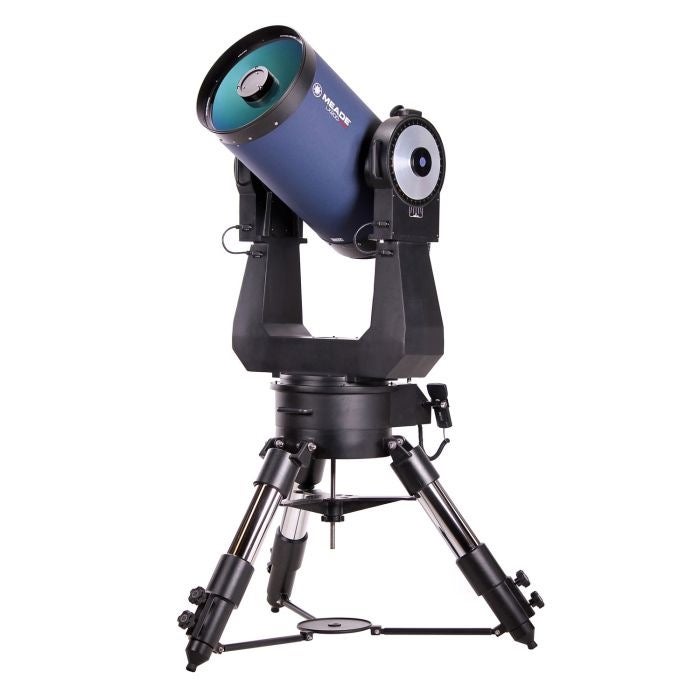
- Price: $17,599.99
- Why we like it: The Meade 16″ LX200 ACF is celebrated for its Advanced Coma-Free (ACF) optics, providing stunning clarity and detail in astronomical observations. It offers a powerful 16-inch aperture, enabling deep-space viewing and detailed planetary observations. The telescope is equipped with GPS, Primary Mirror Lock, and a Zero Image-Shift Microfocuser, enhancing both its functionality and ease of use. The scope offers exceptional performance in dark-sky environments, with enhanced visibility of deep-space objects and remarkable image brightness. Its high-quality construction and professional-grade capabilities make it a top choice for amateur and serious astronomers.
- What to keep in mind: Due to its size and advanced features, the LX200 may be better suited for more experienced users or those with a dedicated observation space. Its weight and size may limit portability, so it might not be suitable for those requiring a more mobile setup.
Product details
- Type: Advanced Coma-Free Cassegrain
- Mount: Fork Alt-Az
- Aperture size: 16 inches (406.4 mm)
- Focal length: 160 inches (4064 mm)
- Focal ratio: f/10
Explore Scientific Generation II 20-Inch Dobsonian Telescope
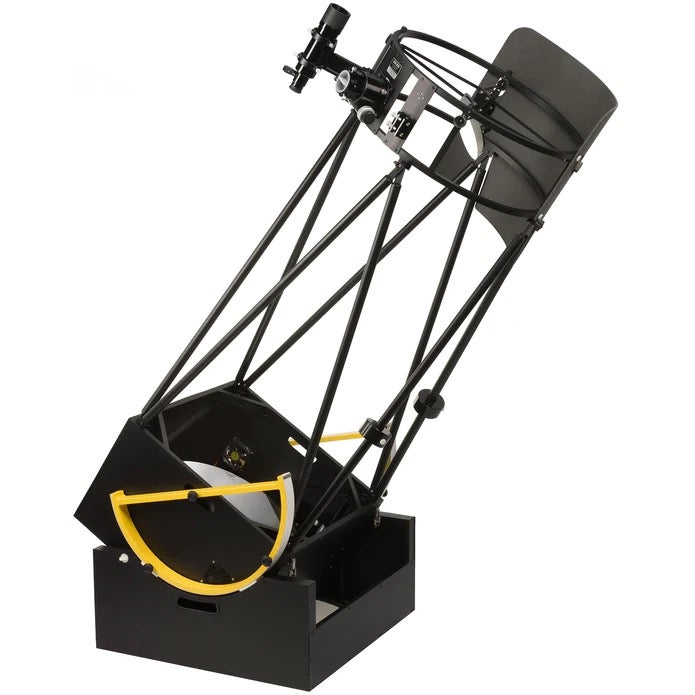
- Price: $9,999.99
- Why we like it: The Explore Scientific Generation II 20-Inch Dobsonian Telescope stands out for its exceptional 20-inch aperture, offering superior light-gathering capabilities. This feature is crucial for observing faint and distant deep-sky objects like nebulae and galaxies with remarkable clarity and detail. It boasts a collapsible truss tube design, balancing its large size with relative portability. This design allows for easier transportation and storage, considering its substantial aperture. The telescope is equipped with high-quality quartz mirrors, reducing cooling time and ensuring it’s quickly ready for use. Each main mirror comes with an individual optical test certificate, ensuring top-notch performance. It features a Rocker Box with high-precision ball bearings for smooth and accurate motion, essential for tracking celestial objects at higher magnifications. The integrated cooling fan enhances the telescope’s performance by enabling quicker temperature acclimatization of the primary mirror.
- What to keep in mind: Despite its collapsible design, the telescope’s size and weight may still be challenging for some users to manage, especially in transport. It’s not the best for those in highly light-polluted environments.
Product details
- Type: TrussTube Dobsonian
- Mount: Altazimuth
- Aperture size: 20 inches (500 mm)
- Focal length: 71 inches (1800 mm)
- Focal ratio: f/3.6
PlaneWave Instruments CDK17 17-inch Optical Tube Assembly
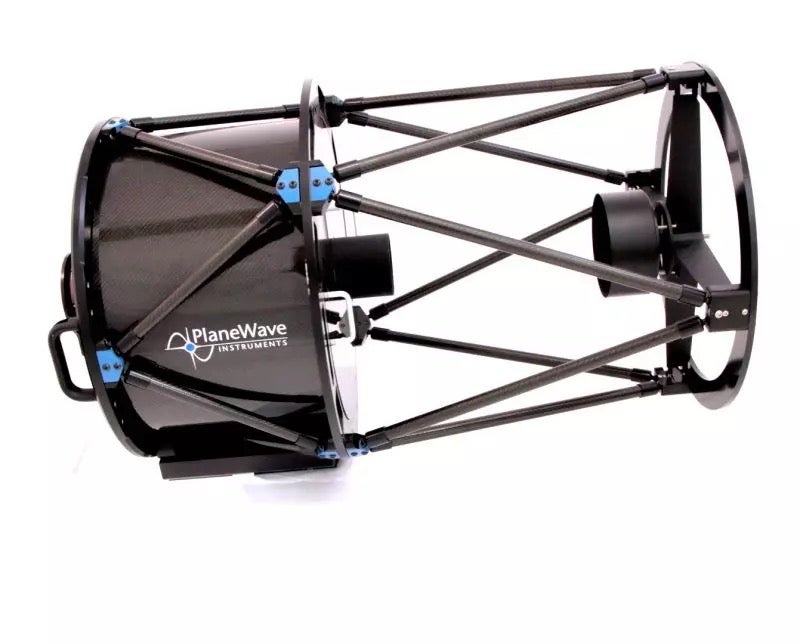
Price: $22,500
- Why we like it: The PlaneWave CDK17 is a marvel in the world of astronomical telescopes, tailored for serious astronomers and astrophotography enthusiasts. Its 17-inch aperture provides an expansive, clear view of the night sky. Unique to PlaneWave, the Corrected Dall-Kirkham (CDK) optical design ensures sharp, aberration-free images across a wide field of view, making it ideal for detailed astrophotography. The carbon fiber truss design not only gives it a sleek and modern look, but also ensures stability and minimal thermal expansion, which is crucial for precise observations. The telescopes compatibility with a wide range of accessories and mounts makes it a versatile choice for many observational needs.
- What to keep in mind: Due to its size and advanced features, the CDK17 is more suited for experienced users or professionals with a dedicated space for astronomy. The investment in this telescope is significant, not just in terms of cost, but also in the time and effort required for its setup and maintenance.
Product details
- Type: Corrected Dall-Kirkham (CDK)
- Aperture size: 17 inches (432 mm)
- Focal length: 115.7 inches (939 mm)
- Focal ratio: f/6.8
Lunt Solar Systems 230mm Double Stack H-Alpha Telescope with B3400 Blocking Filter
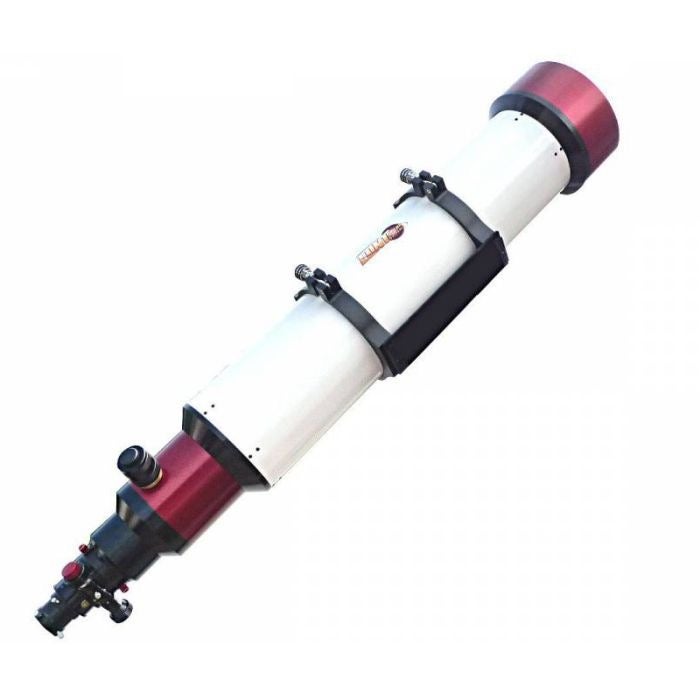
Price: $35,640
- Why we like it: The Lunt Solar Systems 230 mm Double Stack H-Alpha Telescope is a leading-edge solar observation tool. It is renowned for its large, unobstructed 9-inch aperture, which provides exceptional detail and clarity when viewing the Sun. It features double etalons, which result in a narrower bandpass, enhancing the details of the Sun and making it suitable for capturing professional solar images or even conducting advanced research. The telescope is equipped with high-contrast coatings and sports the innovative Doppler True Pressure Tuning system, which helps it deliver unparalleled visual and imaging performance.
- What to keep in mind: This telescope represents a significant investment and is primarily intended for advanced users, particularly those with a strong focus on solar observation and research. It includes a 2″ Starlight Instruments Feather Touch focuser and a B3400 blocking filter, ensuring precise focusing and safe solar viewing. Its size and weight (about 70 pounds) means it requires a stable, dedicated setup, and it may not be the most portable option for field use.
Product details
- Type: Double Stack H-Alpha Solar Telescope
- Aperture size: 9 inches (230 mm)
- Focal length: 63.4 inches (1610 mm)
- Focal ratio: f/7
William Optics FLT 156 6-inch Fluorostar APO Triplet Refractor
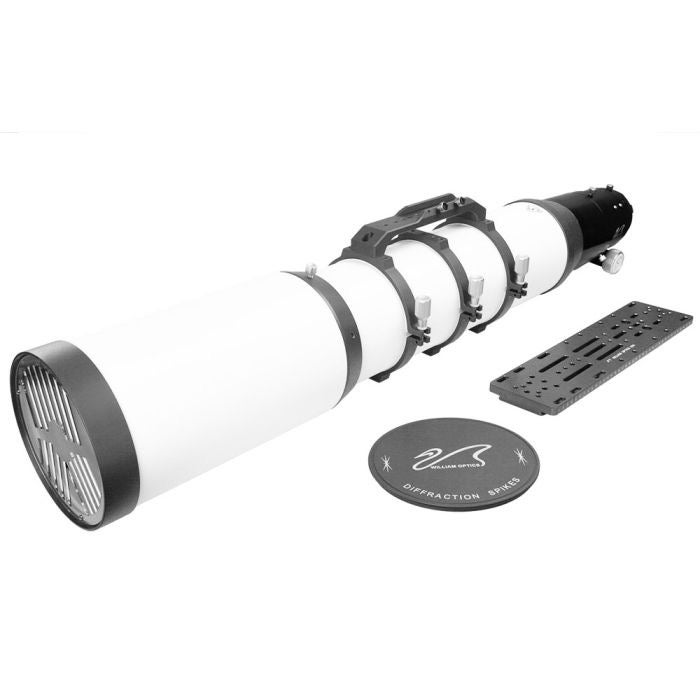
- Price: $8,198
- Why we like it: The William Optics FLT 156 Fluorostar is a high-end APO Triplet Refractor expensive telescope known for its exceptional optical quality. Featuring an air-spaced triplet design with extra-low dispersion (ED) glass, this scope minimizes chromatic aberration and delivers sharp, contrast-rich images. It boasts a focal ratio of f/7.8 and a focal length of 1217 mm, making it an excellent choice for both visual astronomy and astrophotography. The telescope also offers a wide field of view, which is ideal for capturing detailed celestial images. The build quality of the telescope is exceptional, with a CNC machined steel lens cell and high-grade aluminum optical tube assembly. It includes a 3.7″ rack and pinion dual-speed focuser known for its heavy-duty construction and smooth operation, which helps facilitate precise focusing adjustments.
- What to keep in mind: The FLT 156, with its high-end features and size, is best suited for experienced amateur astronomers and astrophotographers. It also requires a stable mount to support its weight and size.
Product details
- Type: Apochromatic Triplet Refractor
- Aperture size: 6.14 inches (156 mm)
- Focal length: 47.9 inches (1217 mm)
- Focal ratio: f/7.8
Stellarvue SVX180T Triplet APO Refractor
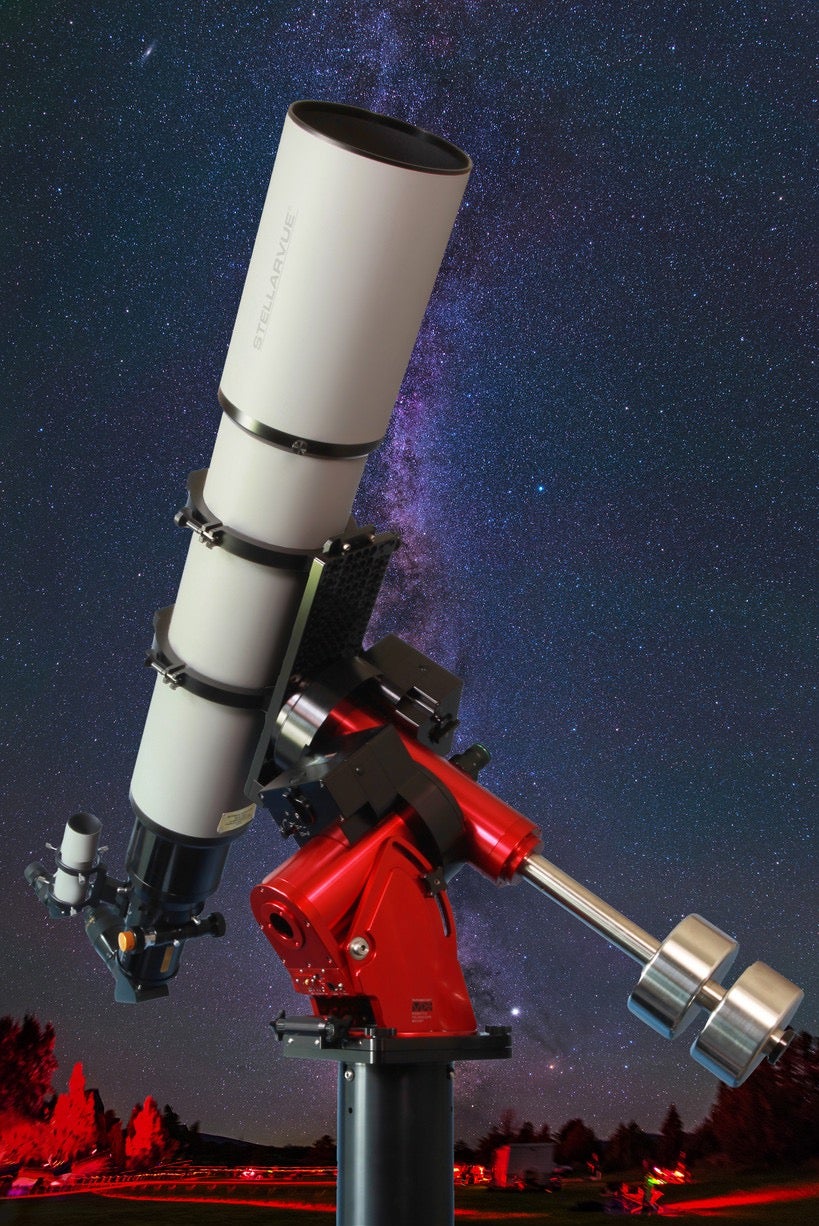
- Price: $18,395
- Why we like it: The Stellarvue SVX180T is a premium 180mm triplet APO refractor, boasting exceptional craftsmanship and optical quality. This makes it a highly desirable telescope for both serious astronomers and astrophotographers alike. It features Stellarvue’s SVX series optics, which are hand-figured to a minimum Strehl ratio of 0.98 to 9.996, ensuring superior visual and imaging performance with virtually no chromatic aberration. The telescope includes a 3.5″ dual-speed, precision focuser with 2″ and 1.25″ adapters, providing smooth and accurate focusing. The carbon fiber tube and retractable dew shield make it relatively lightweight and portable for its size, an important consideration for field observations. It’s compatible with a wide range of accessories and mounts, offering versatility for various observational and imaging setups.
- What to keep in mind: Given its advanced features and high-quality optics, the SVX180T is best suited for experienced astronomers and astrophotographers. It requires careful handling and maintenance to preserve its top-notch optical performance.
Product details
- Type: Triplet APO Refractor
- Aperture size: 7.1 inches (180 mm)
- Focal length: 49.6 inches (1260 mm)
- Focal ratio: f/7
The best expensive telescope mount
Software Bisque Paramount Taurus Model 400 Equatorial Fork Mount with On-Axis Absolute Encoders
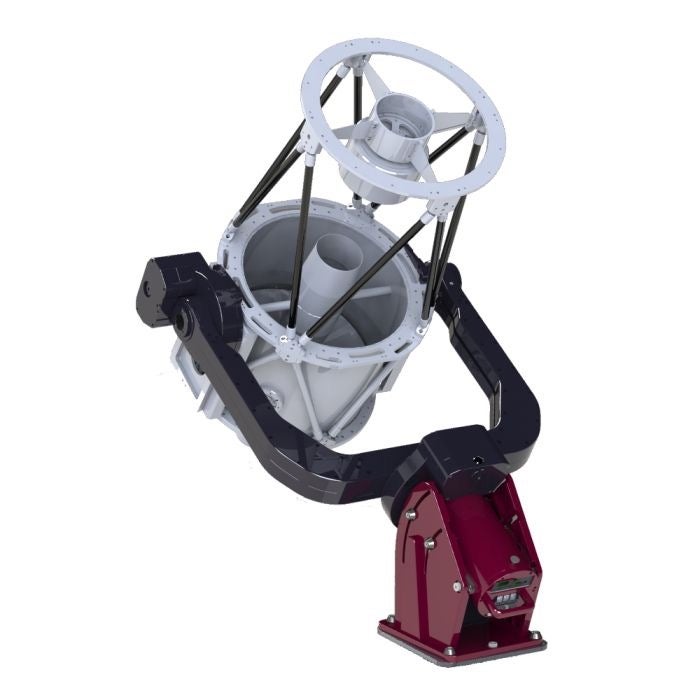
- Price: Approximately $23,995
- Why we like it: The Software Bisque Paramount Taurus 400 is a sophisticated equatorial fork mount specifically designed for observatories and permanent installations with large telescopes. This mount provides exceptional stability and tracking accuracy, making it ideal for advanced astronomical research and professional astrophotography. It features an instrument capacity of up to 150 pounds, accommodating Schmidt-Cassegrain telescopes and open-truss optical tubes up to 17 inches. The Paramount Taurus 400 includes advanced MKS 6000 telescope control systems, offering connectivity via USB C, Ethernet, and Wi-Fi. It also boasts high-power XT60 connectors and a pass-through Ethernet port. One of the mount’s most notable features is its ability to perform horizon-to-horizon slews without needing meridian flips or dealing with dangling counterweights.
- What to keep in mind: The Paramount Taurus Model 400 is a substantial investment and is tailored for serious astronomers or professional settings. This mount is also capable of operating at temperatures as low as 40 degrees below zero. Its size and complexity might make it less suitable for casual astronomers or those without a dedicated space for astronomical activities.
Product details
- Mount Type: Equatorial Fork Mount
- Instrument Load Capacity: 150 pounds (68 kg)
- Pointing Accuracy: 20 arcseconds or less standard, 10 arcseconds or less with optional on-axis encoders
- Encoders: Optional on-axis absolute encoders for sub-0.1 arcsecond resolution
- Features: Belt-driven gears with virtually zero backlash, integrated azimuth and elevation polar-alignment adjustments, and comfortable access to eyepieces.
Our pick for one of the best overall expensive telescopes
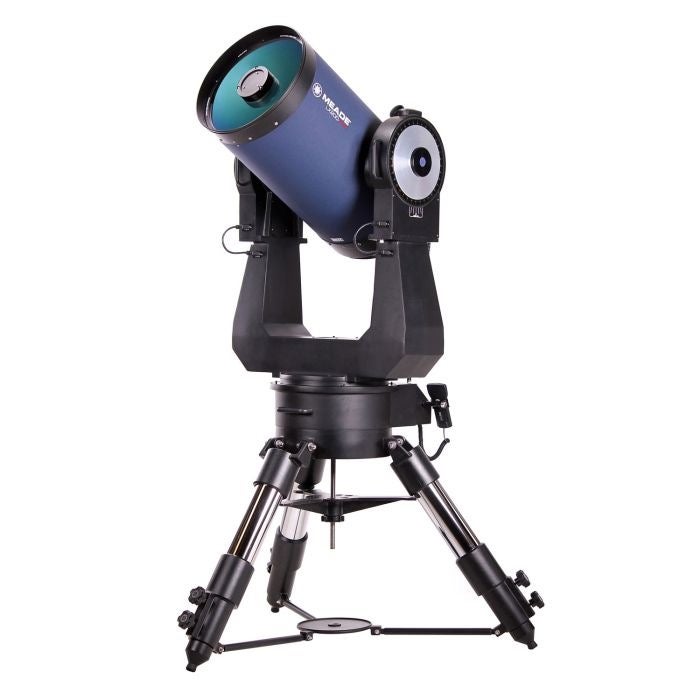
The Meade 16-inch LX200 ACF Computerized Telescope is one of the best overall high-end telescopes because it strikes a great balance between price and performance. This is due to its Advanced Coma-Free (ACF) optics, akin to those used in the Hubble Space Telescope, which offer exceptional clarity and detail. The integration of GPS and high-tech features like the Zero Image-Shift Microfocuser also put the scope at the forefront of technological advancement. And LX200’s 16-inch aperture enables profound exploration of deep-space objects, delivering an unmatched astronomical experience.
How to care for an expensive telescope
All telescopes can benefit from proper care and maintenance. But, maintaining a high-end telescope requires additional diligence and attention so you can ensure its longevity and get the most bang for your buck.
- Proper storage is crucial; keep the telescope in a dry, dust-free environment, ideally covered or in its original case.
- For cleaning, use only specialized lens cleaning solutions and microfiber cloths to avoid scratching the delicate optics.
- Regular servicing, which includes checking and, if necessary, recalibrating the alignment and optics, is recommended.
- Also avoid extreme temperatures and handle your telescope with care during transportation.
Remember, if you’re making a significant financial investment in an expensive telescope, you should likewise invest the time and money you need to ensure it continues to operate at its peak performance for years to come.
Frequently Asked Questions (FAQs)
Why are high-end telescopes so expensive?
High-end telescopes command a higher price due to their advanced optics, larger apertures, sophisticated mounting systems, and additional features like computerized tracking and high-quality construction materials. These elements significantly enhance the overall viewing experience, allowing for more detailed and clearer observations of celestial objects. However, they also significantly increase the cost.
Are high-end telescopes suitable for beginners?
They can be overwhelming for beginners due to their complexity and the detailed knowledge required to effectively operate them. Beginners may benefit more from starting with a less complex model and gradually progressing to more advanced telescopes.
For those looking to explore more affordable telescopes, please see our guides to the best telescopes under $1,000 and the best telescopes under $500.
How do high-end telescopes compare with professional telescopes?
High-end telescopes for amateurs are incredibly advanced and offer excellent capabilities. But professional telescopes, like those used in observatories, have larger apertures, more sophisticated technology, and are often housed in locations with near-ideal viewing conditions. These professional instruments are designed for in-depth scientific research and can capture far more detailed astronomical data than those available to consumers.
Investing in a high-end telescope can profoundly transform your journey as an amateur astronomer. These telescopes not only bring the wonders of the universe closer, but also offer increased clarity and detail when viewing celestial objects. Expensive telescopes bridge the gap between amateur enthusiasm and professional-grade astronomical exploration, allowing users to experience the night sky in ways they never thought possible.


